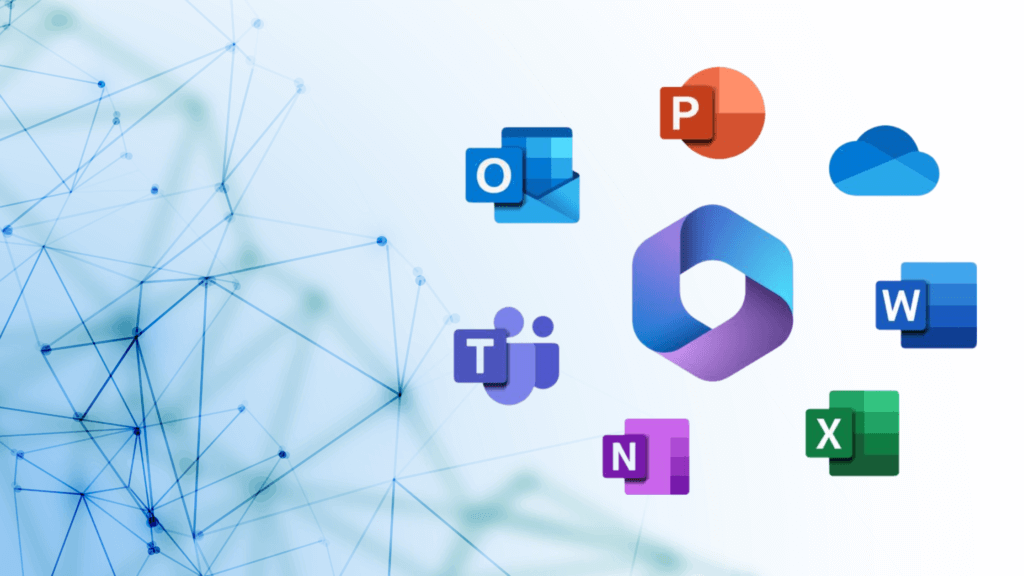How to Protect Your Business from Microsoft 365 Security Risks
As businesses continue to shift their operations to the cloud, Microsoft 365 has become a critical tool for productivity, collaboration and communication. However, the platform’s popularity also makes it a prime target for cybercriminals. To safeguard your business, it’s essential to understand the top Microsoft 365 security risks and implement effective strategies to mitigate them.
In this blog post, we’ll explore the four most significant Microsoft 365 security risks and provide practical tips on how to protect your business.
Risk #1: Phishing Attacks
Phishing attacks continue to be one of the most common types of cyberattacks and are the number-one Microsoft 365 security risk. With phishing schemes, cybercriminals will send emails that appear to be from a known or trusted sender and ask the recipient to share confidential information. The email may also ask the recipient to perform an action, such as transferring funds to an account that appears legitimate but is not.
Microsoft 365 users are particularly vulnerable to phishing attacks because of the platform’s integration with email, which is attractive to hackers.
How to Protect Your Business
To prevent phishing attacks, it’s important for businesses to enable several layers of cybersecurity. These include:
- Multi-factor authentication. At Atlas, we recommend that all Microsoft 365 users enable multi-factor authentication (MFA), also known as two-factor authentication. MFA requires users to provide at least two methods of authentication when logging into Microsoft 365. This makes it more difficult for hackers to gain access to the account.
- Advanced email filtering. To reduce the risk of a Microsoft 365 security breach, we also recommend enabling advanced email filtering. Microsoft Defender for Office 365 can be added to your Microsoft 365 stack and helps filter out phishing emails before they reach your inbox. Third-party tools are also available.
- Employee training. Phishing schemes cannot be completed without the cooperation of your team. For that reason, employee education and training should be included in your overall cybersecurity program. This training should include how to spot red flags in an email – such as unexpected requests for information and misspellings in an email address or link.
Risk #2: Malware Attacks
Another common Microsoft 365 security risk is malware attacks. Malware is designed to disrupt, damage or gain unauthorized access to a device or network. This is done through viruses, ransomware and spyware.
Malware can also be downloaded to a device as part of a phishing attack. Once downloaded to the device, malware can cause significant system downtime, compromise sensitive personal information and cause financial loss.
How to Protect Your Business
To defend against malware attacks, it’s important for businesses to enable several layers of cybersecurity. These include:
- Endpoint detection and response (EDR). EDR solutions are the gold standard of malware detection and response. Unlike traditional anti-virus and anti-malware software that detects known viruses, EDR solutions can identify ransomware, unknown malware threats and malicious behaviors that are not yet known. At Atlas, we use SentinelOne for EDR cybersecurity protection.
- Regular Microsoft 365 updates. Microsoft 365 is continually rolling out updates and security patches that reduce cybersecurity vulnerabilities. It’s important to stay on top of these updates and patches to ensure you are not putting your business at risk. If you work with a managed service provider, like Atlas, this should be part of your Microsoft 365 service.
- Employee education. Educating your employees on the signs of a malware attack can also reduce the risk of a Microsoft 365 security This includes things like unexpected pop-ups, slow-performing systems or unauthorized changes to files. If employees notice these things, they should report it immediately to your IT team. It’s also important to educate them on what to look for when downloading attachments from unknown or new senders, as this could be a malware threat.
Risk #3: Privilege Escalation
Another Microsoft 365 security risk is privilege escalation. This occurs when a hacker gains access to the system and then exploits vulnerabilities to gain higher-level access within the Microsoft 365 environment. With these higher-level privileges, the attacker can change system settings, access sensitive data and even create new accounts with administrative rights.
This is a common way cybercriminals execute a business email compromise (BEC) scheme. BECs are executed when a hacker gains access to an executive’s email. The hacker then sends an email to someone on the team – let’s say the CFO – requesting a transfer of funds. It is only after the funds are transferred that the executive learns that the money was deposited into a cybercriminal’s account.
Once in the email, the hacker will use their administrative privileges to change rules that make these emails difficult to detect. For instance, they may set a rule that the email is deleted after it is sent so it does not appear in the sent email folder.
How to Protect Your Business
To prevent cybercriminals from gaining access to your Microsoft 365 environment and escalating privileges to conduct a cyberattack, it’s important to:
- Use Role-Based Access Control (RBAC). RBAC is the practice of assigning roles to users based on their job functions. This should be strictly enforced and monitored so employees do not have access to files or information they do not need. A best practice is to ensure users have only the minimum level of access necessary to perform their job functions. Doing so reduces the risk of a Microsoft 365 security breach via privilege escalation.
- Conduct regular audits and monitoring. Monitoring your system for failed password attempts, logins from a different country, or abnormal or concerning activity should be a regular practice. Doing so may prevent cybercriminals from gaining access to Microsoft 365 with a legitimate password. At Atlas, we use a tool from Huntress to monitor this type of behavior. We also recommend blocking access from countries like China and Russia.
Risk #4: Data Loss
Because Microsoft 365 is such a comprehensive, collaborative tool, data loss is a significant risk. When many people in the company have access to data, loss could come from accidental deletion, ransomware attacks or unauthorized access. This could, in turn, cause operation disruptions or financial loss. Microsoft 365 does provide some data recovery options, but they may not recover all lost data.
How to Protect Your Business
To bolster data recovery and mitigate the risk of loss, it’s important for businesses to:
- Use Microsoft Azure for added protection. In the event of a disaster, cloud-based servers like Microsoft Azure have built-in redundancies that allow for speedy data recovery. Using Microsoft Azure, you can also replicate an entire environment as if the data was never lost. Meaning, your team can get back to work with as little downtime as possible.
- Schedule regular backups. To prevent data loss, it’s important to schedule regular backups of all Microsoft 365 data. This includes emails, files and SharePoint documents. Store backups securely so you can quickly restore them in the event of data loss.
- Define data retention policies. Another best practice for businesses is to define and enforce data retention policies within Microsoft 365. For instance, client data should live within the system for at least five years after the end of an executed agreement. Defining who within the company should delete information can also prevent employees from accidentally deleting key files.
In today’s digital landscape, safeguarding your Microsoft 365 environment is not just an option—it’s a necessity. As cybercriminals become more sophisticated, understanding and addressing the top Microsoft 365 security risks is crucial for protecting your business’s sensitive information and maintaining operational continuity.
At Atlas, we recommend all businesses take a layered approach to cybersecurity that includes:
- Managed detection and response (MDR)
- Endpoint detection and response (EDR)
- Advanced threat detection (ATD)
- Advanced threat prevention (ATP)
- Virtual private networks (VPN)
- Multifactor authentication (MFA)
- Email spam filtering
- Firewalls
Does your business currently use Microsoft 365? Are you concerned that you’re not doing enough to protect against security threats? Contact us today to learn how Atlas can provide end-to-end Microsoft 365 management – from migration to management and protection from Microsoft 365 security threats.





